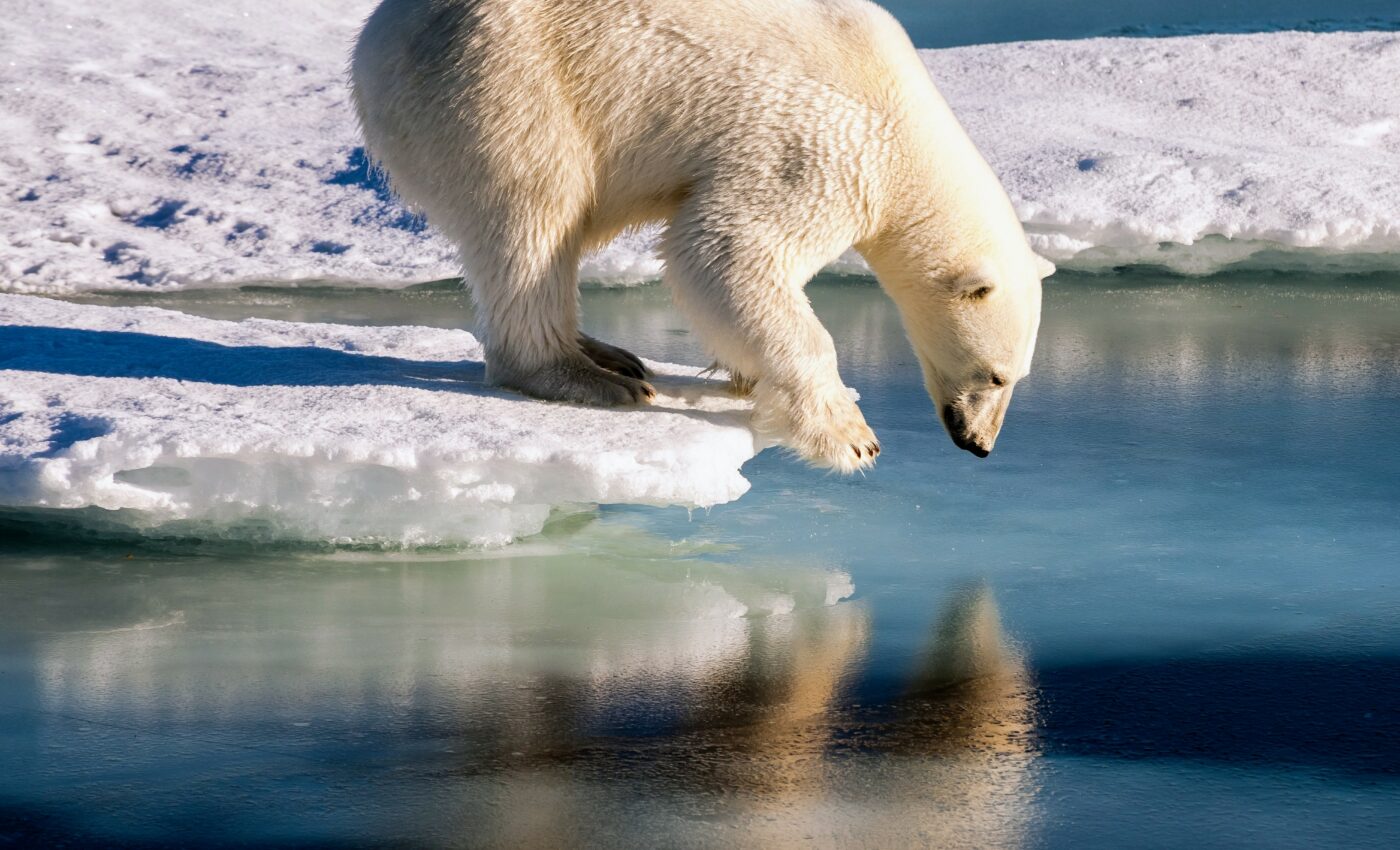
How do polar bears get traction on ice?
For a long time, humans have wondered how to better move across wet or frozen surfaces safely, whether to improve shoes for walking on dangerous sidewalks, or tires to maneuver on roadways. Now, a team of researchers led by the University of Akron has investigated what makes it possible for some arctic animals, such as polar bears, to run across the ice so effortlessly and gracefully without slipping or falling.
“We had an ongoing project for many years focused on ice; we were looking at the friction of materials and we were interested in this topic because we are in Akron and our national partners need to develop tires with a strong grip on the road in ice and snow conditions,” said study senior author Ali Dhinojwala, a professor of Polymer Science at Akron. “Nate [lead author Nathaniel Orndorf, a former doctoral student at the same university and currently a senior material scientist at Bridgestone Americas] had an interest in how nature has adapted to this solution for snow. The example that came to his mind was polar bears – and the research began from there.”
Previous studies investigated the microstructures (the papillae, or tiny bumps on the pad of the foot) of polar bear paws, arguing that they were evolutionary adaptations for improved traction on snow. However, these studies did not include other bear species, such as some closely related to the polar bear that the current study examined, including the brown bear, or the American black bear.
The scientists collected samples and replicas of bear paw pads from museums and taxidermists across the U.S. and examined them using a scanning electron microscope. Moreover, they also created 3D printouts of the structures in order to vary their diameter and height of features and tested them in snow to assess how they reacted to inclement conditions.
The analysis revealed that while all bears (except the sun bears, a more distant species relative to the other ones the experts investigated) had papillae on their paw pads, the papillae on polar bear paws were 1.5 taller compared to those of other species, a feature which helps them increase traction on snow. Although polar bears have smaller paw pads than other species – most likely because of greater fur coverage for heat conservation – their taller papillae compensated for this, providing a 30 to 50 percent increase in frictional shear stress.
“Papillae are not unique to polar bears. Previous work [in that area] made the implicit assumption that papillae themselves are adaptations for enhanced traction on snow without studying the paw pads of other bears. It was fascinating for us to discover that the other North American bears have them as well and that the physical characteristics of the papillae are what matters for traction on snow,” said study co-author Austin Garner, an assistant professor of biology at Syracuse University.
These findings could be applied to develop better automobile tires, as well as equipment for high altitude climbers or companies that specialize in delivering goods in bad weather.
The study is published in the Journal of the Royal Society Interface.
—
By Andrei Ionescu, Earth.com Staff Writer
Check us out on EarthSnap, a free app brought to you by Eric Ralls and Earth.com.













